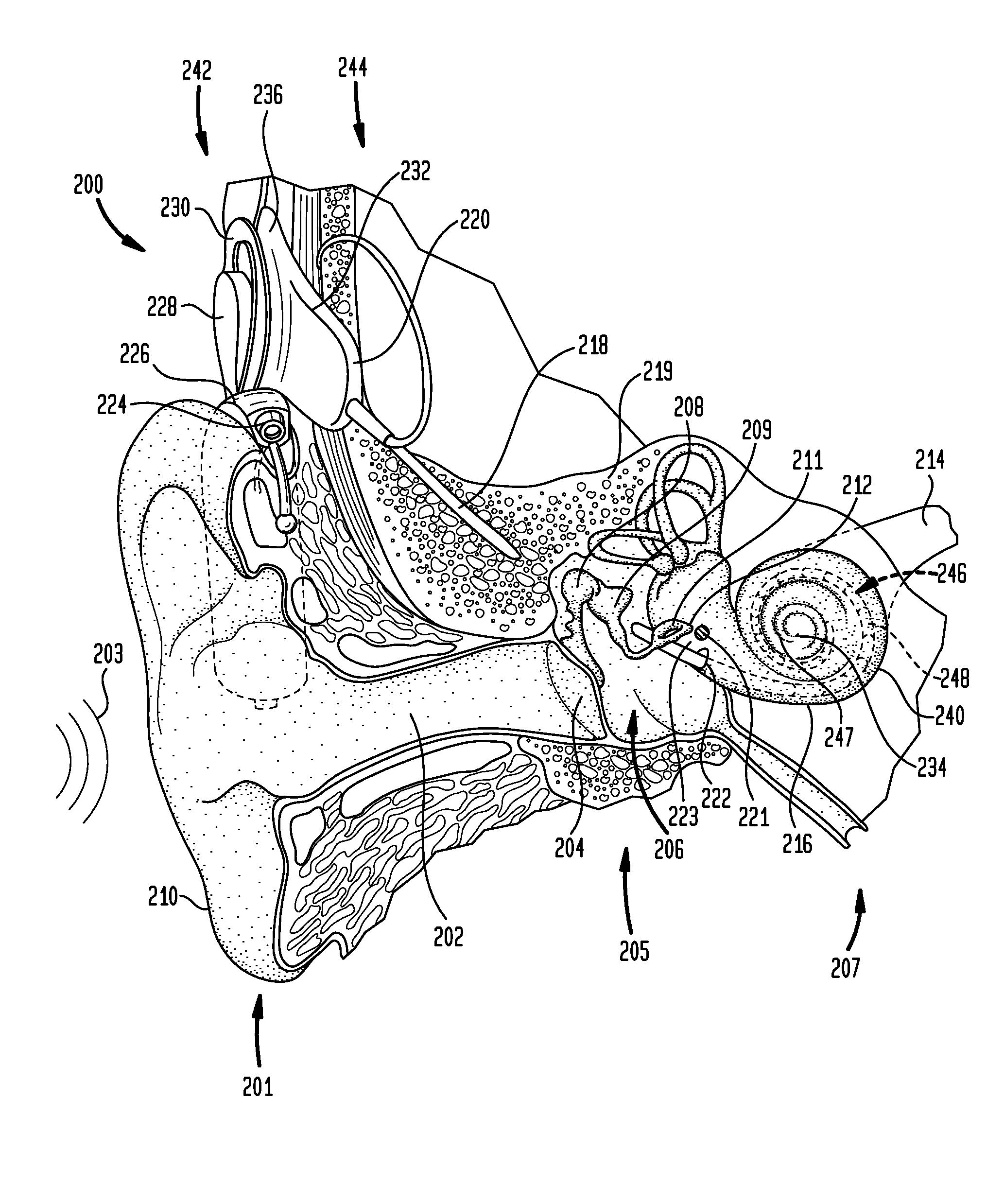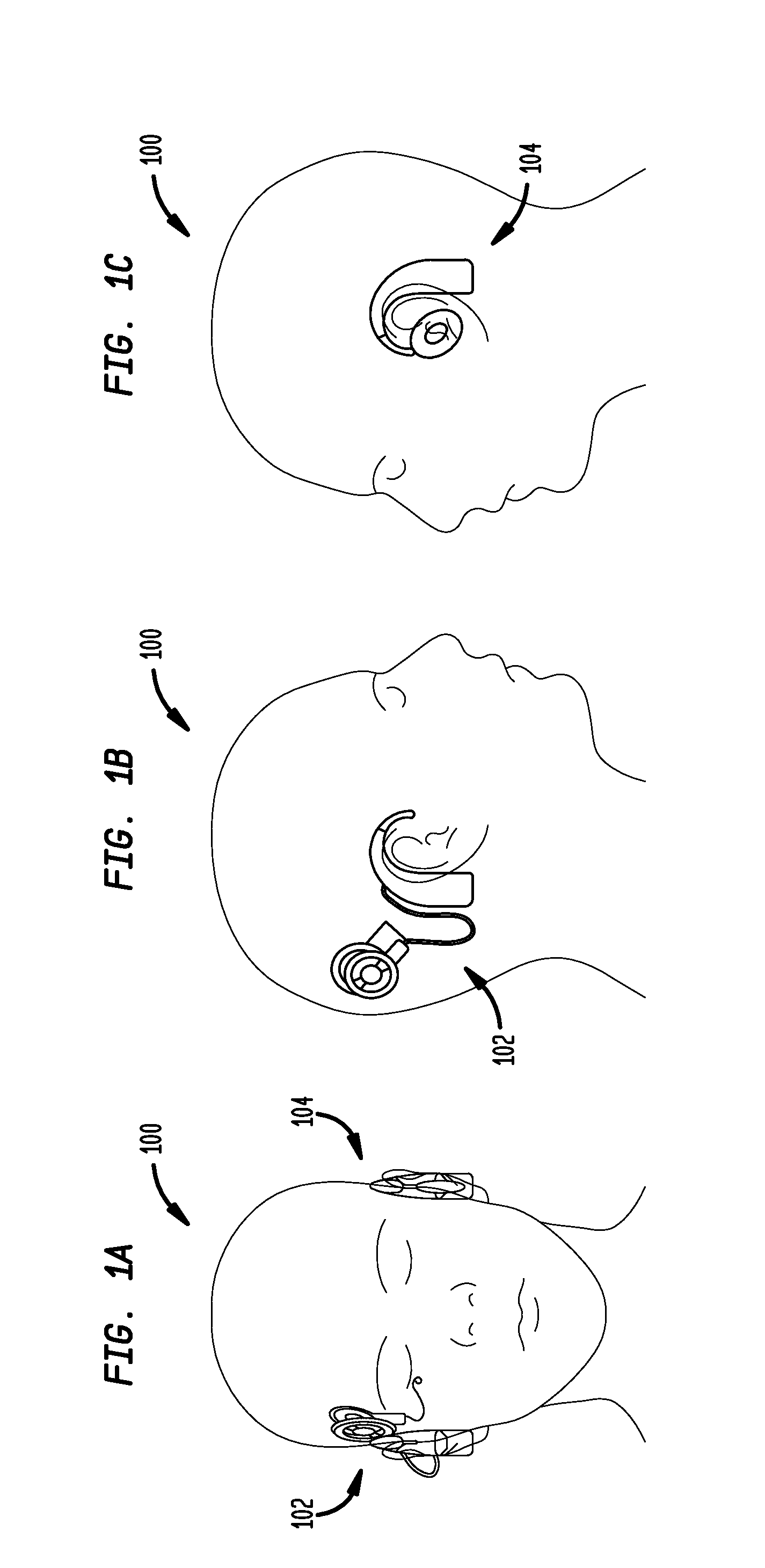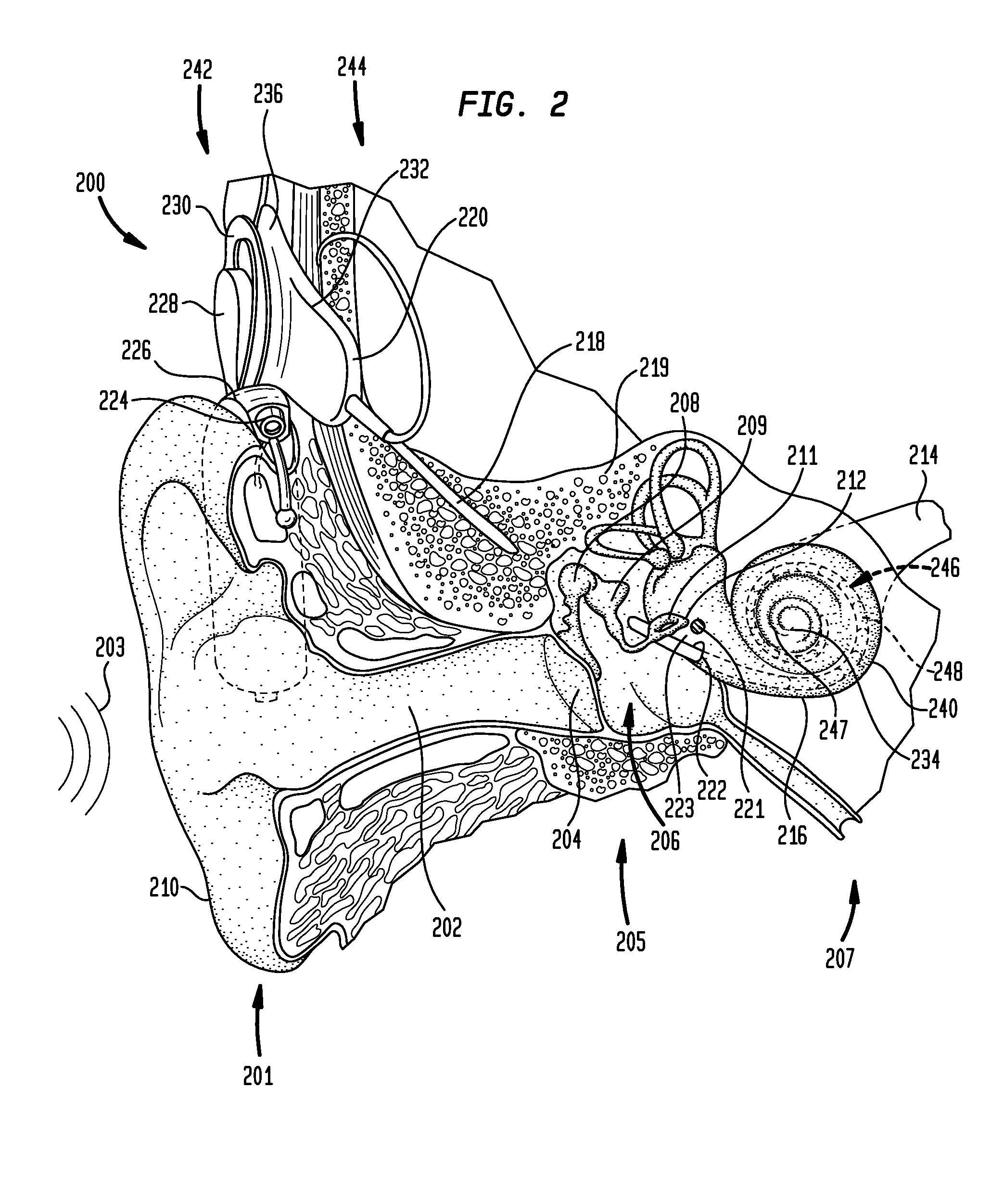Interaural time difference enhancement strategy
a technology of time difference and enhancement strategy, which is applied in the direction of head electrodes, ear treatment, internal electrodes, etc., can solve the problems of conductive hearing loss, impeded normal mechanical or acoustic pathways which conduct sound to the cochlea, and hearing loss
- Summary
- Abstract
- Description
- Claims
- Application Information
AI Technical Summary
Benefits of technology
Problems solved by technology
Method used
Image
Examples
Embodiment Construction
[0024]Recipients of a cochlear implant with residual hearing in the non-implanted ear typically can only make limited use of interaural timing cues with current cochlear implants. Depending on the location from which a sound originates, the sound can arrive earlier at one ear of an individual than the other ear. For example, if a sound originates on the left side of an individual, the sound will arrive at the left ear of the individual prior to arrival at the right ear. This difference in time between when a sound arrives at one ear versus the other is referred to as the interaural time difference (ITD). Interaural timing cues, such as the ITD, are important for sound source localization and the unmasking of speech in noise.
[0025]As will be discussed further below, an embodiment of the present invention employs a modulation enhancement strategy that helps improve ITD perception by explicitly modulating the electrical stimulation signal. In an embodiment, the timing of the modulation...
PUM
 Login to View More
Login to View More Abstract
Description
Claims
Application Information
 Login to View More
Login to View More - R&D
- Intellectual Property
- Life Sciences
- Materials
- Tech Scout
- Unparalleled Data Quality
- Higher Quality Content
- 60% Fewer Hallucinations
Browse by: Latest US Patents, China's latest patents, Technical Efficacy Thesaurus, Application Domain, Technology Topic, Popular Technical Reports.
© 2025 PatSnap. All rights reserved.Legal|Privacy policy|Modern Slavery Act Transparency Statement|Sitemap|About US| Contact US: help@patsnap.com



